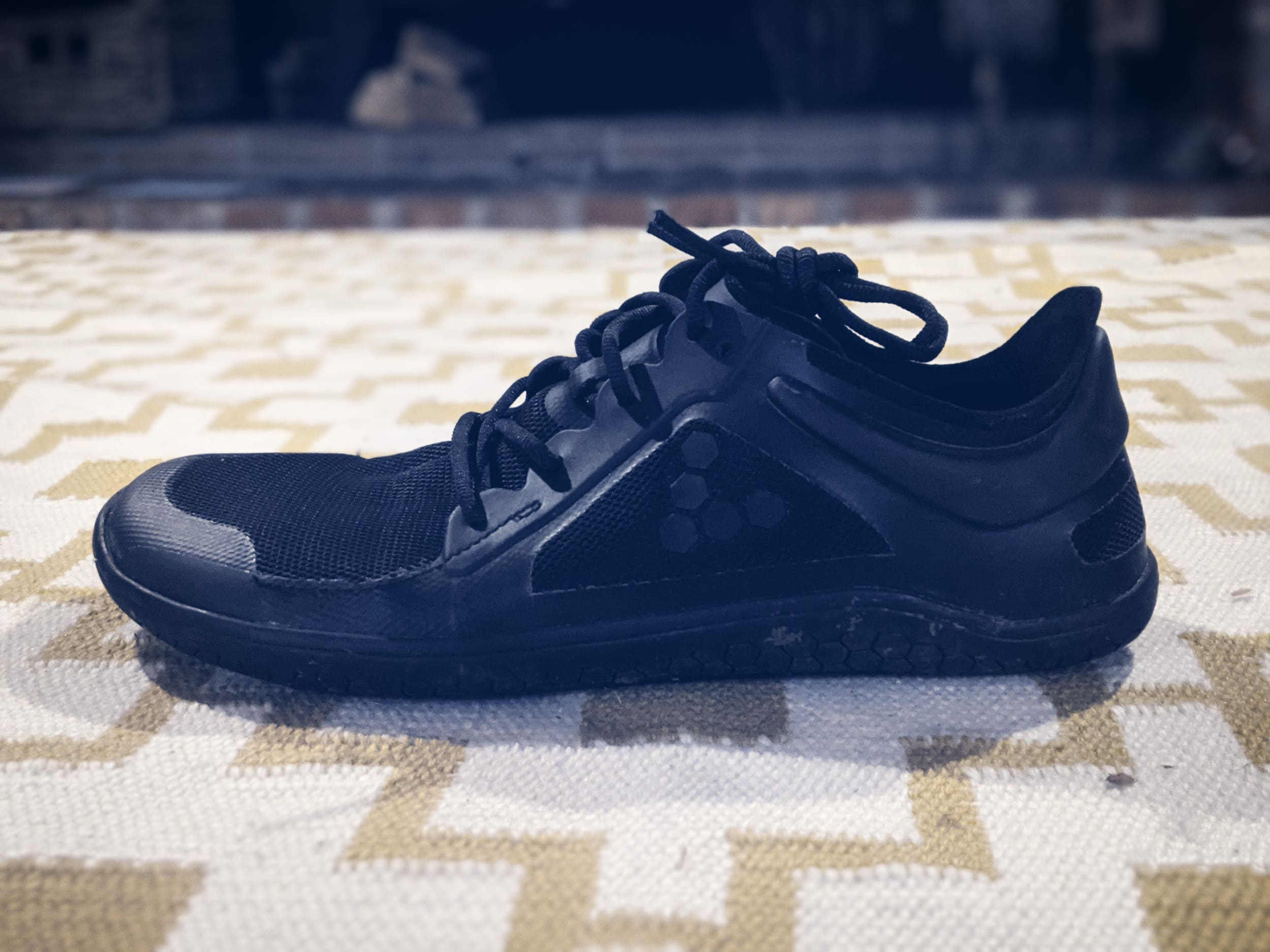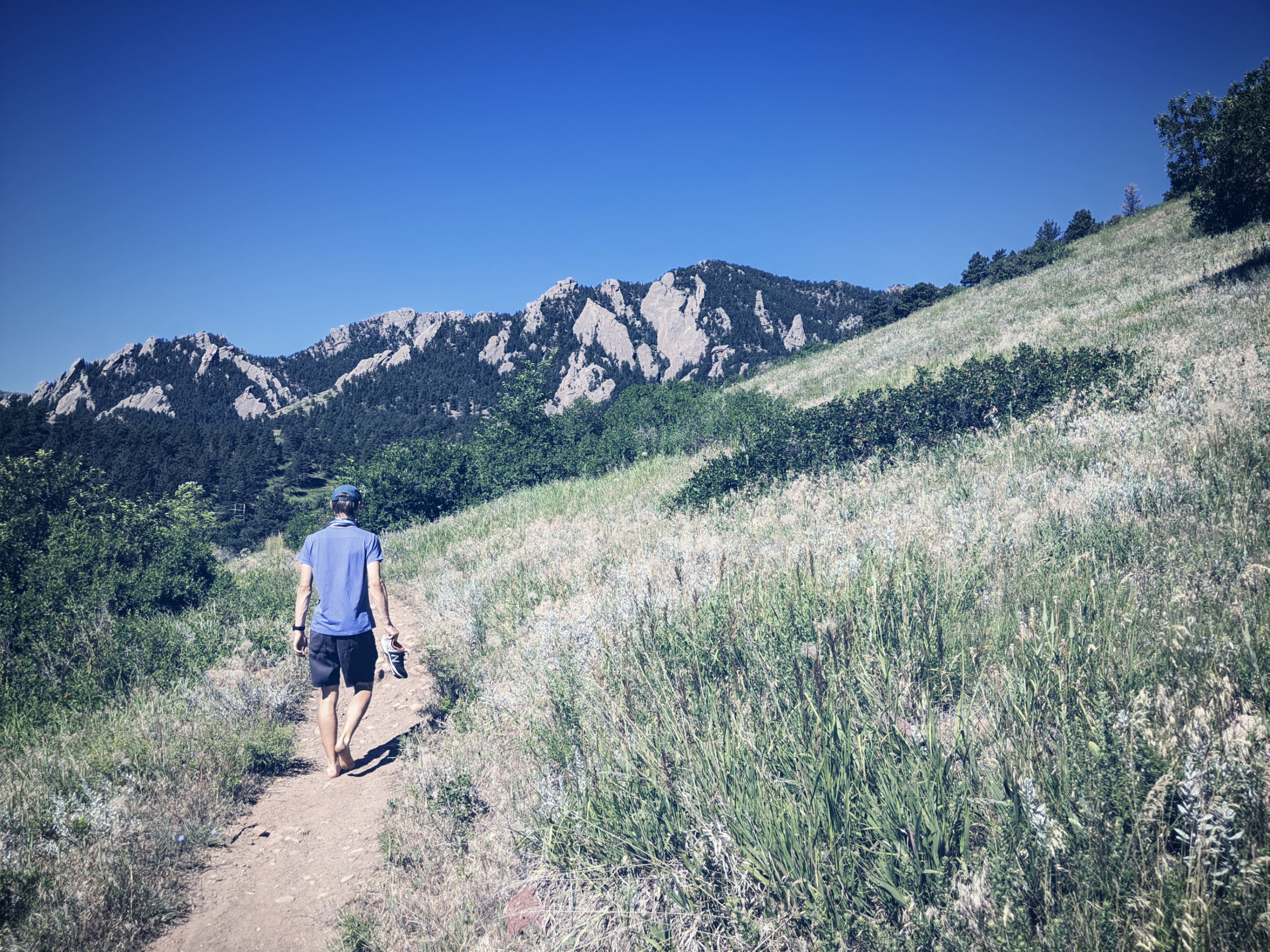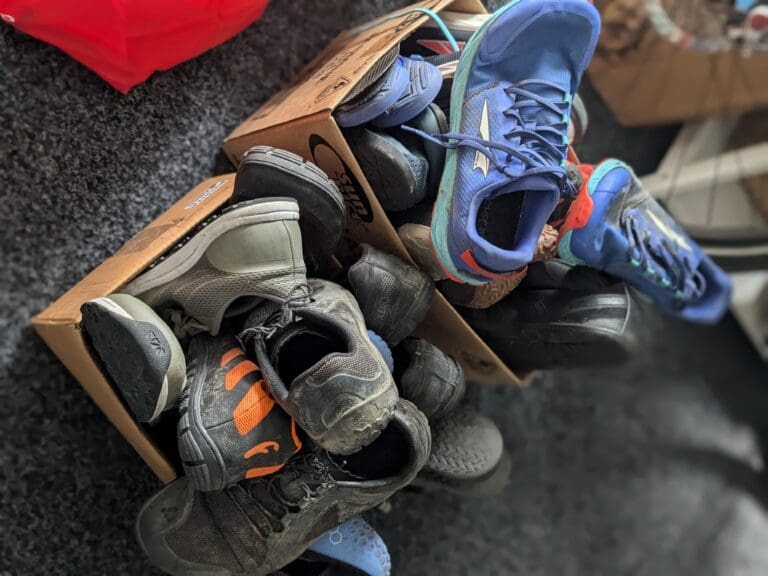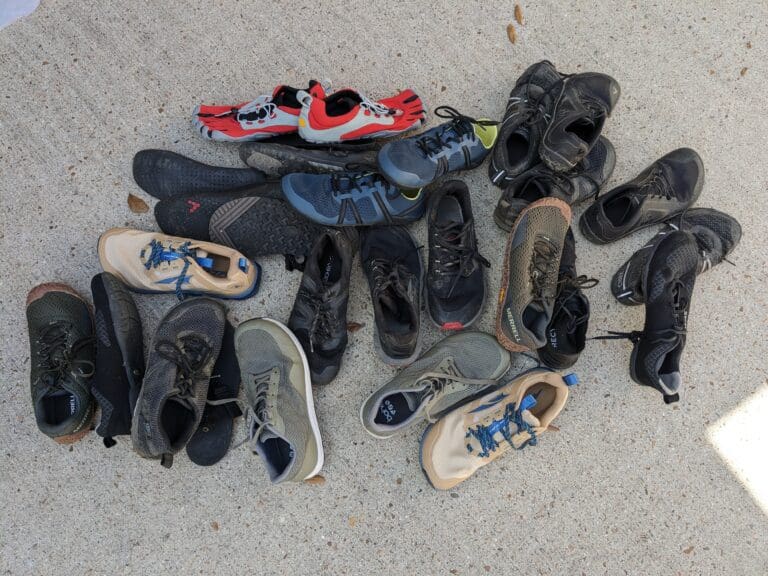I’m big on barefoot running. If you don’t believe me check out “Are you running shoes causing your injuries?” and you’ll see why. For most people, the biggest hurdle to barefoot running is transitioning from traditional shoes into minimal shoes. Today, I’m sharing a few barefoot running exercises that can help smooth that journey and keep you injury-free during your transition.
First things first. Go Slow!
I know every article about barefoot running tells you to go slow, but really, go slow. I’m only saying this because I didn’t (like 90% of the other barefoot runners), and you guessed it, my feet suffered.
It’s not going to be an instant journey.
I’d estimate it took me nearly 2 years to transition completely out of all “standard” shoes. And even today, I still enjoy the odd run in my Inov-8 Race-Ultras, or pair of Altras.
Let’s get on to some of the tricks, tips, and barefoot exercises.
Affiliate Disclosure: By clicking through the links on this page and purchasing the products, you’ll be helping me out. This is done because I receive a kickback from the sellers at no extra cost to you! Thank you so much for supporting us!
I’m horrified when I see people wearing shoes inside. My mother would have been shouting, “Take your shoes off at the door!”.
But my reasons aren’t for sanitation (although that’s a fair argument); it’s for our foot health.
Our feet are supposed to be free, with complete sensory stimulation. The 7,000 nerve endings in each of our feet provide essential sensory input to help us stabilize, adjust and react to surface changes.
But you probably already know that if you’re pursuing the barefoot journey.
So, what’s my best advice?
Walk around your house barefoot! And yes, that means no socks too!
The idea is to retrain your sensory input and allow your brain time to practice and correct posture and the firing of muscles in a low-stress state.
It may sound easy, but for some, it may still be hard. Take it easy, and if you’re feeling sore in your calves, achilles, or feet, give it a rest for a bit. Have a cup of tea and put your feet up.
2. Perform mobility barefoot exercises
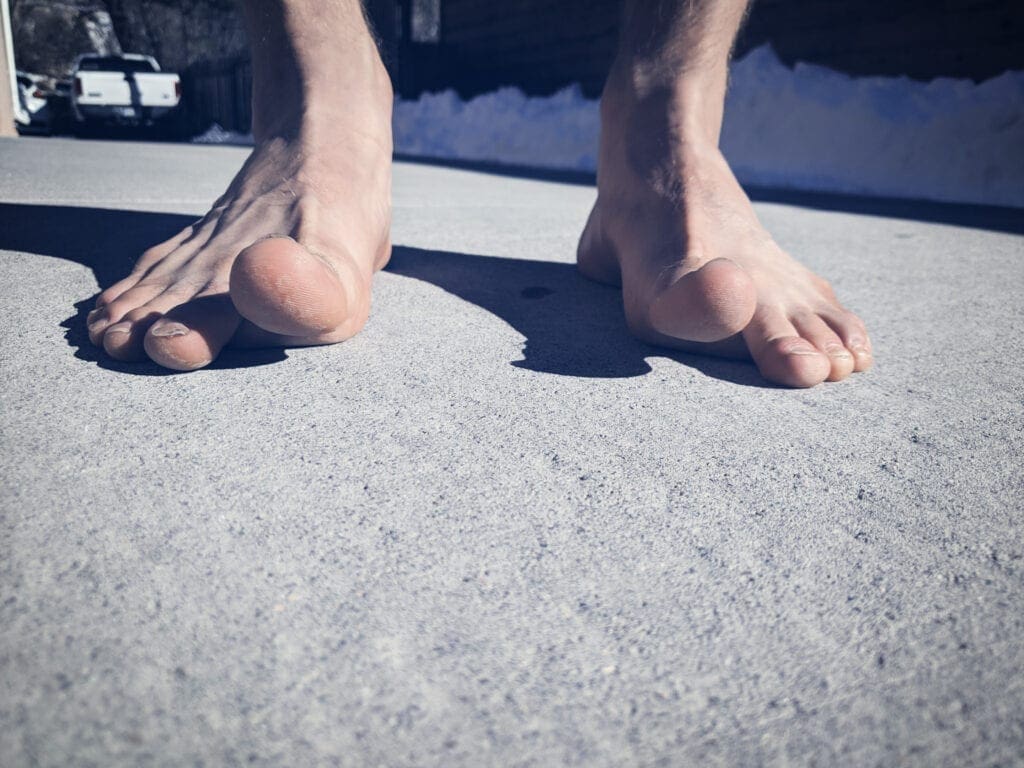
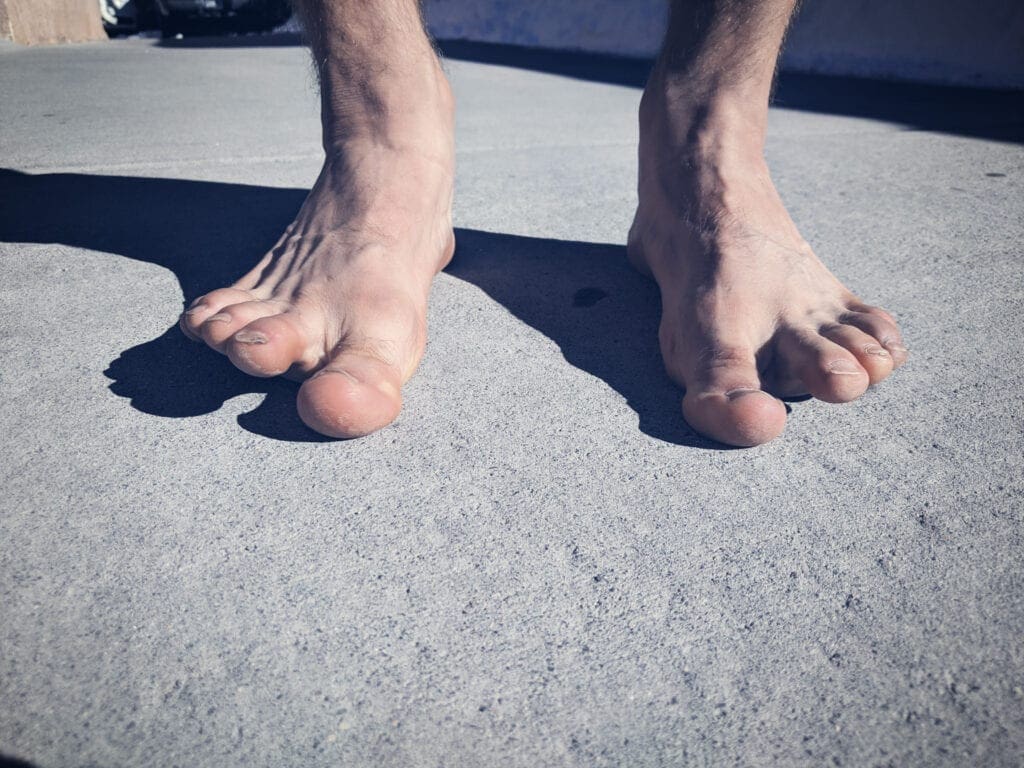
Traditional shoes often have narrow toe boxes, crushing your toes together and immobilizing your 10 stabilizing powerhouses (hint, your toes).
Look down at your bare feet.
Now try and wiggle your toes.
Why would we have these digits that are moveable, strong, and nimble? They evolved for a reason. And that reason is for stabilization.
Sadly, because we’ve spent too much time with our toes bound (i.e., modern shoes), it’s common to lose dexterity.
That’s why you should practice wiggling your toes.
One of my favorite exercises is to place your foot on the floor. Lift all but your big toe, hold for a few seconds, and then alternate. Lift only your big toe. Sounds easy, but it’s super hard.
Practice wiggling your toes multiple times throughout the day.
- When you’re waiting for your coffee.
- When you’re brushing your teeth.
- When you’re watching TV.
Mobility is all about repetition. Your body will learn the movements that you do most often.
Which minimal running shoe is for you?
Take a quick 5-question quiz to identify the perfect minimal running shoe for your feet! You'll get both road and trail options based on your answers!
It’s essential to get to know the feeling of natural barefoot running. And that means dropping those shoes altogether.
Find yourself a smooth, hard surface, free of any sharp objects, and go for a slow run.
The surface must be hard because you want to learn how your biomechanics work rather than letting a soft surface do the job.
At first, just run up and down for a few 100 meters. You’ll notice that you naturally cushion your landing by landing towards the ball of your foot. If this didn’t happen, it would just be painful, and your brain would quickly complain.
Notice how your landing is softer and learn the motion. Feel your feet landing directly below your body without the unnecessary overstriding. You may start to notice your cadence increase, which is a natural way to decrease the impact on your joints.
This practice isn’t so much about building strength and mobility but more to familiarize your brain (and yourself) with the feeling of being genuinely barefoot.
You’re going to be working those muscles when you start to transition to walking around with bare feet. By those muscles, I primarily mean your feet and calves. That’s why we need to take good care of them.
The best way to take care of your muscles is to give them a small massage.
For your feet, it’s easy. Whenever you sit down and have a free minute, take your thumbs and press into the soles of your feet. Using enough pressure, move your thumbs around the sole until you feel a tender spot. When you find that tender spot, continue massaging the area for a minute or so.
You can use a similar method for your calves, or you can use a foam roller.
Sit down on the floor with the roller under your calf, cross your other leg over and lift yourself, so all the weight is on the roller. Roll up and down, pausing on tender spots—don’t forget to breathe into the delicate areas to help the muscles release and relax.
This last exercise is a bit of fun. You want to act like a monkey.
Let your feet be your hands.
I came up with a silly but fun practice to help strengthen your foot and hip mobility at the same time.
Standing up with a sock in your hand, throw the sock a couple of inches in front of you. Now pick up the sock but ONLY with your foot/toes. Lift the sock back up with your foot and place it in your hand. Now repeat this on both sides until you feel like a monkey.
This exercise is fun, and it helps with multiple facets of mobility. You may even find it hard to pick up anything with your feet at first, and that’s ok! With each mistake you make, your brain learns. In no time, you’ll teach your feet to be super nimble and monkey-like!
Conclusion
And that’s it! 5 unique barefoot running exercises to help you master your barefoot journey.
The key is “slow practice” rather than excessive force. No long runs barefoot; just short practice runs, at least until you become a barefoot master.
Once you feel more confident, start transitioning your day-to-day shoes for minimal shoes. That way, you’ll get more low-impact practice every day and teach your brain the new (or old) technique.
If you’re looking for minimal shoes, below you’ll find some of my favorites for all occasions. And remember, it’s an investment in your overall health and mobility.
Trail, Road & Casual Shoes
Xero shoes have all the bases covered when you’re looking for minimal shoes. I like Xero shoes because they provide the best minimal feel but still in an affordable range. Add the 5000-mile sole guarantee, and you’re on to a winner.
Personally, the Mesa Trail’s are my go-to trail shoes and the Hana’s are my only casual shoes!
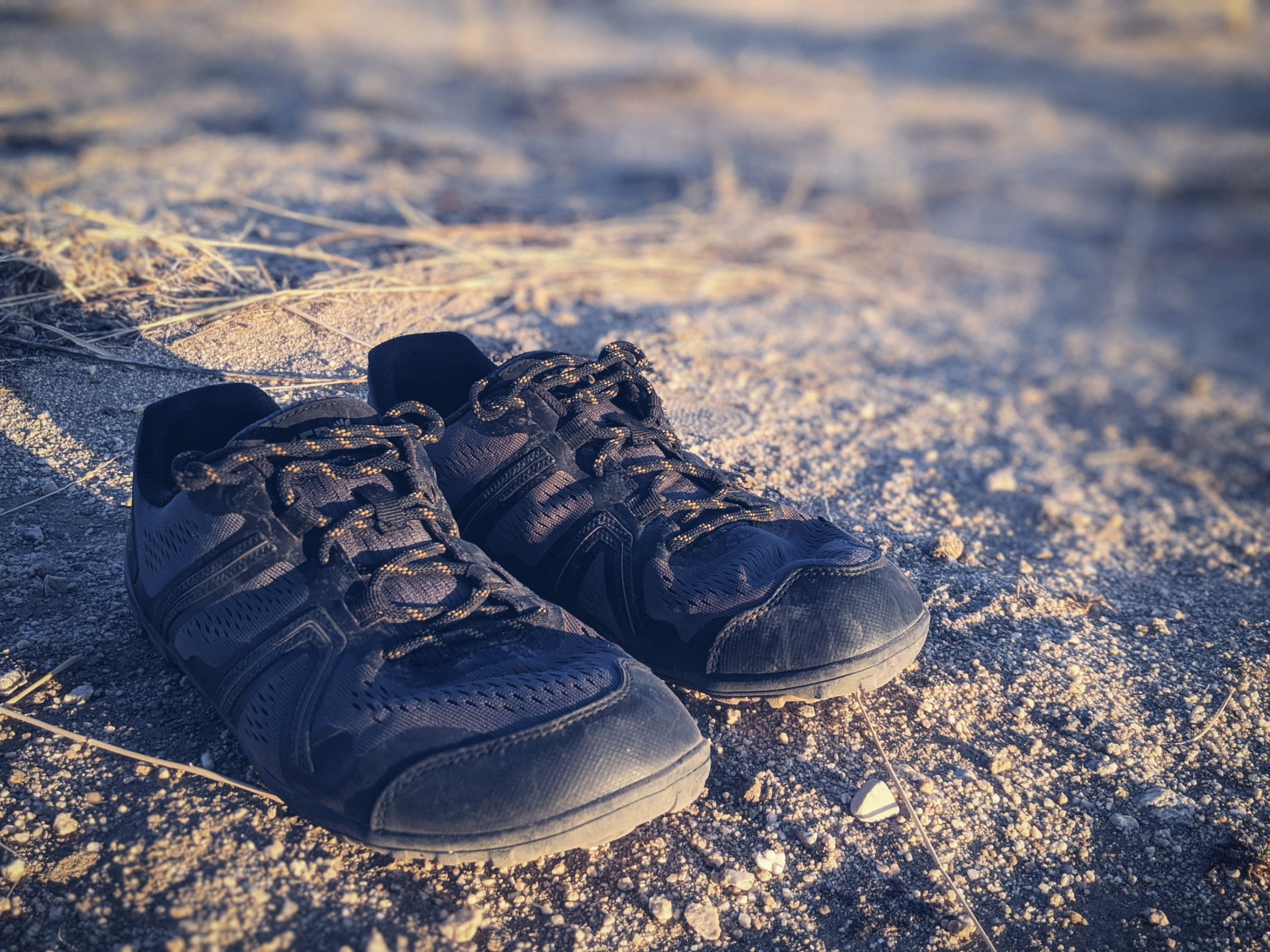
Road Shoes
I’m a big fan of Vivobarefoot. But I’ll admit they’re not cheap.
The thing is, these babies a built to last, and if they wear out, you can also get them repaired! No more throwing away your running shoes every 400 miles!
